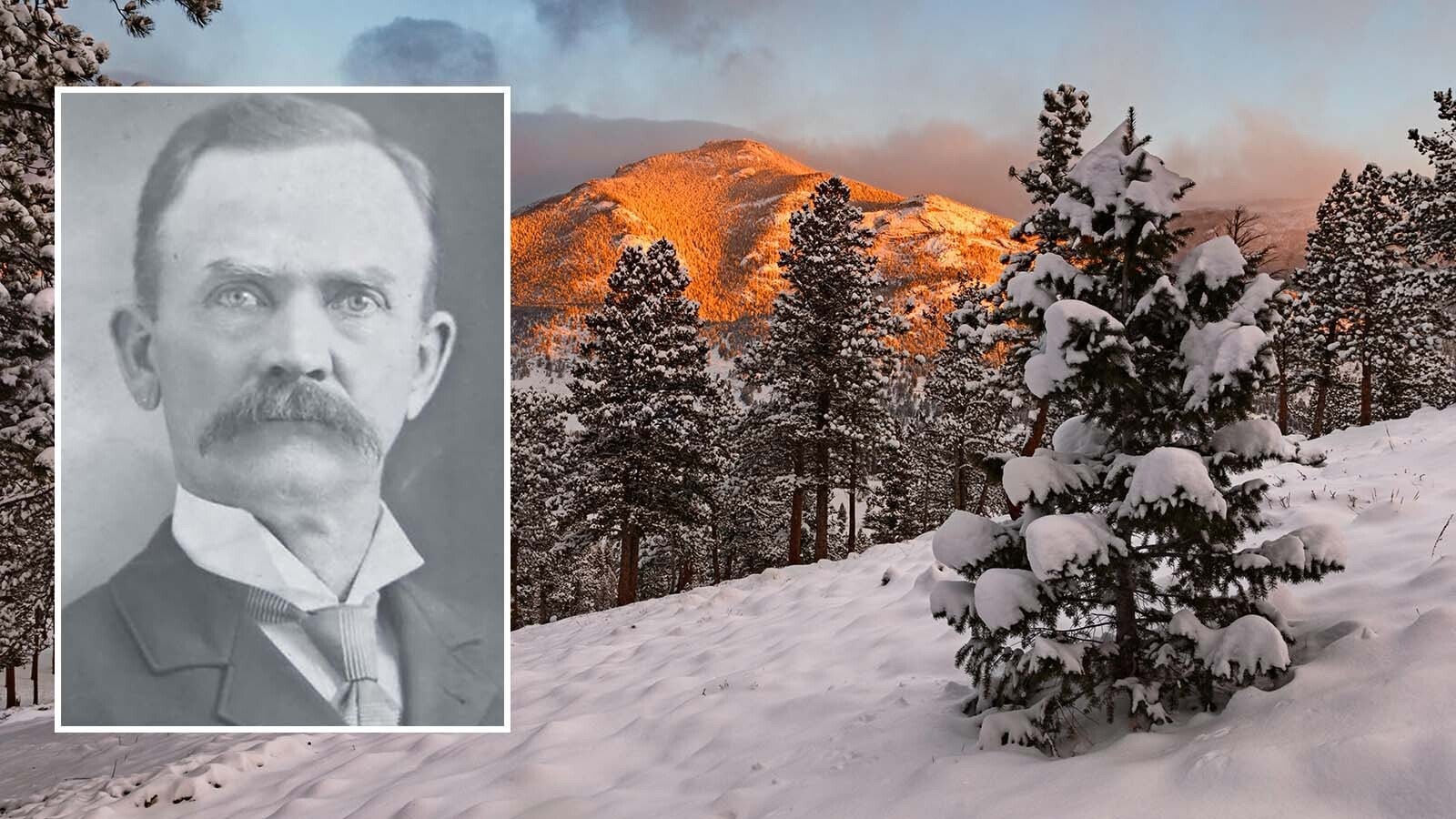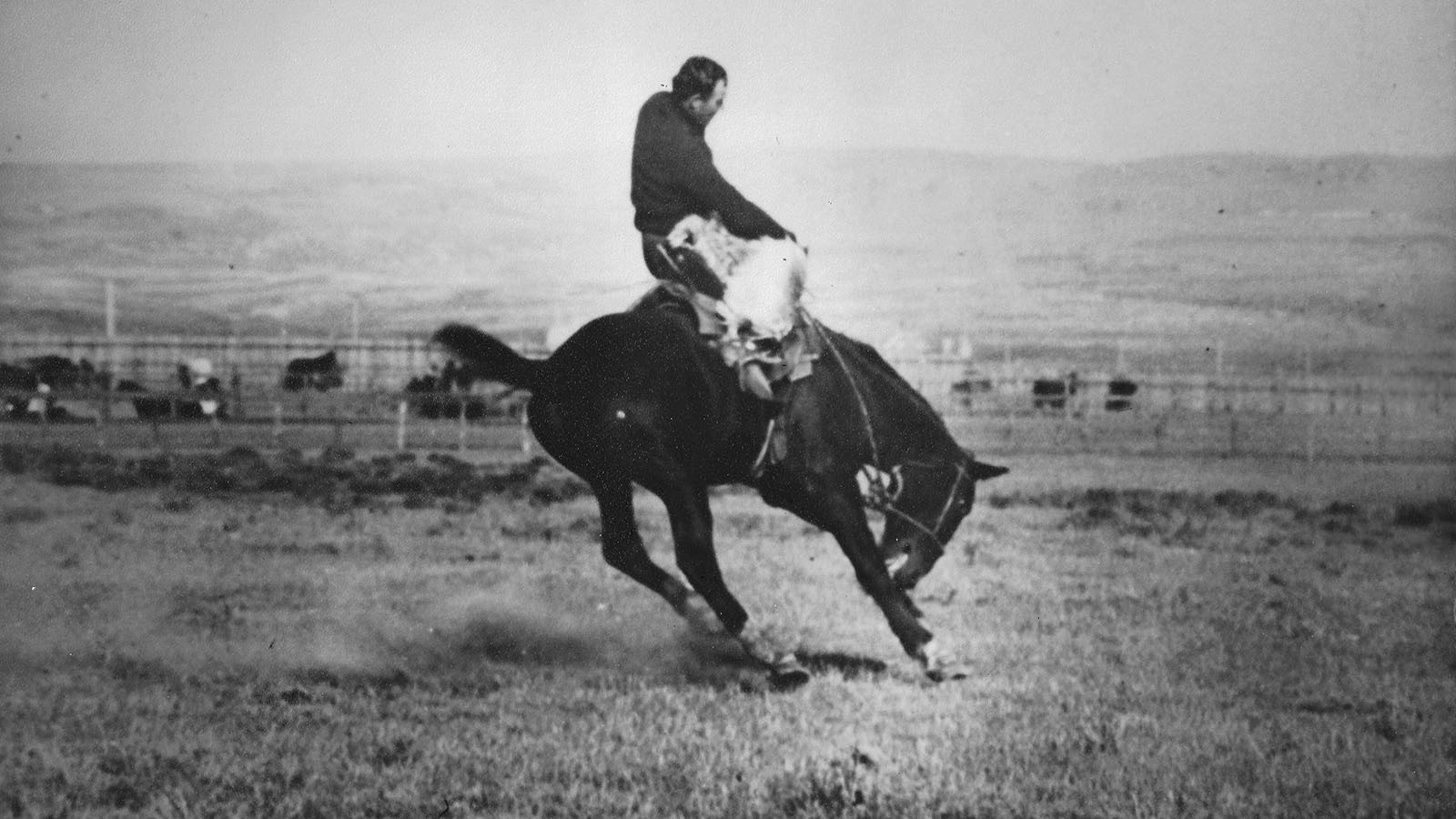For years growing up in sight to the Grand Tetons to the west and Gros Ventre Range to her east, Dawn Kent kept her eye out on the landscape along the Gros Ventre River in Kelly, Wyoming, for a post office safe.
It washed away 98 years ago in the Kelly Flood, and her grandfather, Raymond C. Kent, was postmaster for the small Wyoming community at the time.
“There were two safes that were lost in the flood,” she said. “One at the Kneedy home and one at the post office. The Kneedy safe was found about 30 years ago, about 2 miles downstream in the river bottom.
“But the post office one was never found, although I was always told there really wasn't much in it that mattered.”
It’s been a century since the rumble of collapsing boulders, dirt and shale created an estimated 50 million cubic yards of debris that formed a natural dam on the Gros Ventre River in Teton County on June 23, 1925.
Two years later, heavy rains and snowmelt collaborated to breach the barrier and unleash a flood, leaving behind memories and landscape scars.
Kent, 71, believes her family may be the sole remnant with blood links in Kelly to the pioneers who were around when the dam let loose and washed out about 75 buildings and killed six people May 18, 1927. That includes homes, outbuildings and much of the town.
“Gros Ventre River Flood Takes Huge Toll in Life and Property,” the Jackson’s Hole Courier newspaper headline reported Thursday, May 19, 1927. “Death and destruction came down the Gros Ventre River yesterday morning in a great wall of water that snuffed out at least six lives, wiped the town of Kelly off the map and swept away several hundred head of livestock.”
Kent said to understand the flood, one has to go back to the natural dam formed when a large part of the north side of Sheep Mountain in the Gros Ventre Range slid down into the valley below blocking the river.
Her grandmother, Anne Kent lived in Kelly in 1925, helping run the local store and post office with her husband, Raymond.
In 1940, Anne wrote an account of both the slide and the flood that her granddaughter keeps filed in a book.
Written Remembrance
“There was a big landslide just four miles east of the settlement. That slide was an enormous thing, hundreds of tons of earth break off from the north hillside, filling the canyon for one-half mile, making a dam just that thick and 200-feet high,” Anne Kent wrote. “It shut off the river and backup up the water, taking about 12 or 15 days in making a lake seven miles long.”
Anne Kent wrote that “miraculously,” no one was caught in the slight and that only shortly before the slide, cowboys had put the last of their range cattle through the canyon.
“The last two riders were so close to the edge of that moving mass they were covered with dust,” she penned.
Jackson’s Hole Courier reported Thursday, June 25, 1927, that the Gill Huff ranch was almost totally inundated and that Huff lost a “fine new $10,000 home underwater.”
It also reported the Card ranches were lost and another rancher, Ed Russell, was also threatened.
The slide followed a similar event in 1909 that first created the original “Slide Lake,” which thereafter would be “Upper Slide Lake” while the new lake was dubbed “Lower Slide Lake.”
The newspaper reported that prior to the slide there had been a “number of light earth tremors” felt in the Jackson Hole region.
A visit by Wyoming State Engineer Frank Emerson in July 1925 found that things had settled down and the river was flowing through the center of the 180-foot-high dam. The lake behind the dam was about 5 feet from the top of the fill.
He estimated that water levels would eventually decrease below the fill to about 25 feet. The natural dam was holding, and people should not be afraid to enter Yellowstone National Park from the southern entrance.
“A person would probably be safer in any traveled region of the Jackson Hole region today than he would be upon the streets of any of our large cities,” Emerson wrote.
Floating Hayrack
However, in May 1927, with melting snows and rains feeding the lake, a ranger noticed an old hayrack that had been floating on the lake for two years suddenly floating down the river.
He realized the dam was weakening and water was topping it. He rode to Kelly to warn people to get out.
Dawn Kent said her father, who was 14 at the time, was in school. Her grandfather ran to the school and told all the students to go home.
Her grandfather instructed her dad to go home and let the horses out, but not to take any time collecting tack and just to head to high ground.
Her mother, who lived on a ranch north of town, was 7 years old at the time and witnessed the wall of water descend when the dam broke. Kent’s grandmother in her account of the flood wrote that the Gros Ventre River had become muddy and swollen.
“Sometime in the forenoon, the dam gave way and by 11:30 the town of Kelly was washed away,” Anne Kent recorded. “The residents had realized that a large amount of water was coming and most of them left for high ground.
“One family of three was caught and drowned, also three others who lived on the river below the town.”
Kent’s grandmother estimated that 75 buildings were washed away along with all the possessions and materials inside them, including bedsteads, kitchen ranges, ice boxes and two safes.
“A marriage certificate, Mr. Kent’s and mine, was afterwards found covered with mud,” Anne Kent wrote. “Several pieces of thin cut glass, a wedding gift to one couple, was later found with not a nick or a scratch.”
Flood waters went all the way to Wilson and ranch land, cattle and buildings along the river between Kelly and the junction of the Gros Ventre and Snake rivers were destroyed.
The destruction was estimated to be 3 miles as its widest point.
Casualties
In Kelly, the Kneedy family — Henry Milt Kneedy, his wife, and adopted son, Joe — died as did a pioneer schoolteacher, Maud Smith, and her sister, May Lovejoy.
Rancher Clint Stevens tried to ride a hayrack through the surging waters and drowned.
Many in the estimated 50-member community narrowly escaped death. The Jackson’s Hole Courier reported that Charles Rhinehart pulled himself to safety through a grove of aspen, that a Mrs. Almy and an unidentified man pulled themselves out of the surging water just below Kelly, and Chester Simpson lost his car in the flood as he was trying to start it.
“Henry Francis (carried) him to safety behind his saddle,” the newspaper reported May 19, 1927.
Only the Episcopal Church, its parsonage and the school were left standing in Kelly. Overall, an estimated 40 families in the region were displaced.
Dawn Kent said her grandparents moved the store and the post office to the church building. And the store continued to be operated by her family until 1971 when the building burned.
As a girl working at the family store in the 1960s, she said people would ask about the flood, and the family became adept at repeating the story for tourists and others.
One story from the flood is that a woman when she evacuated town right before the flood to higher ground took her wind-up victrola player and one record. The record was the “Wreck of Old ’97.”
“And so, they sat up there on the bench and listened to the ‘Wreck of Old ’97,’” Kent said.
In the years following the flood, debris that had sunk in the mud would surface.
Kent said as a girl she saw rusted cars along the river she assumes were from the flood. Old bottles, tin cans and other rusted debris once buried and sticking out of the ground in the river region were always suspected as remnants from the disaster.
A Safe
In 1999, fisherman Ernie Wampler Sr. saw a piece of metal poking out of the riverbank while fishing in late November.
Upon investigation, it turned out to be a safe. The safe was dug out and taken to the Jackson Hole Historical Society and Museum for a public opening.
“Artifacts from inside the safe include a silver pocket watch, a pair of eyeglasses, a glass jar, many coins and tokens dating from 1920 and earlier, leather pouches, purses and wallets, wads of paper embedded in mud and other items,” the Jackson Hole News reported Dec. 8, 1999.
It was determined to have belonged to the Kneedy family.
Each year, Kent said Kelly residents gather in May to remember the flood and share photos and interesting articles. They just wrapped up their annual meeting earlier this month.
On June 7, Kent said that as part of National Trails Day, a commemoration of the 1925 slide is planned by the Friends of the Bridger-Teton nonprofit. The group is planning work at the Gros Ventre Slide Geological Area to rehab trails and pull invasive species plants from 9 a.m. \to noon. A special commemoration of the slide with speakers is planned.
Kent said the slide and flood are important to remember for history’s sake as well as how it changed the landscape of the area and impacted so many lives.
Shaking continues in the region from time to time and other minor slides have happened over the years.
But Ken said she continues to watch for the piece of history that can be traced back to the post office her grandfather oversaw.
“I’ve always had my eyes open, hoping that someday I might find that other safe,” Kent said. “But of course I never have … but it still could happen. Everyone was surprised when Ernie found the other one.”
Dale Killingbeck can be reached at dale@cowboystatedaily.com.













